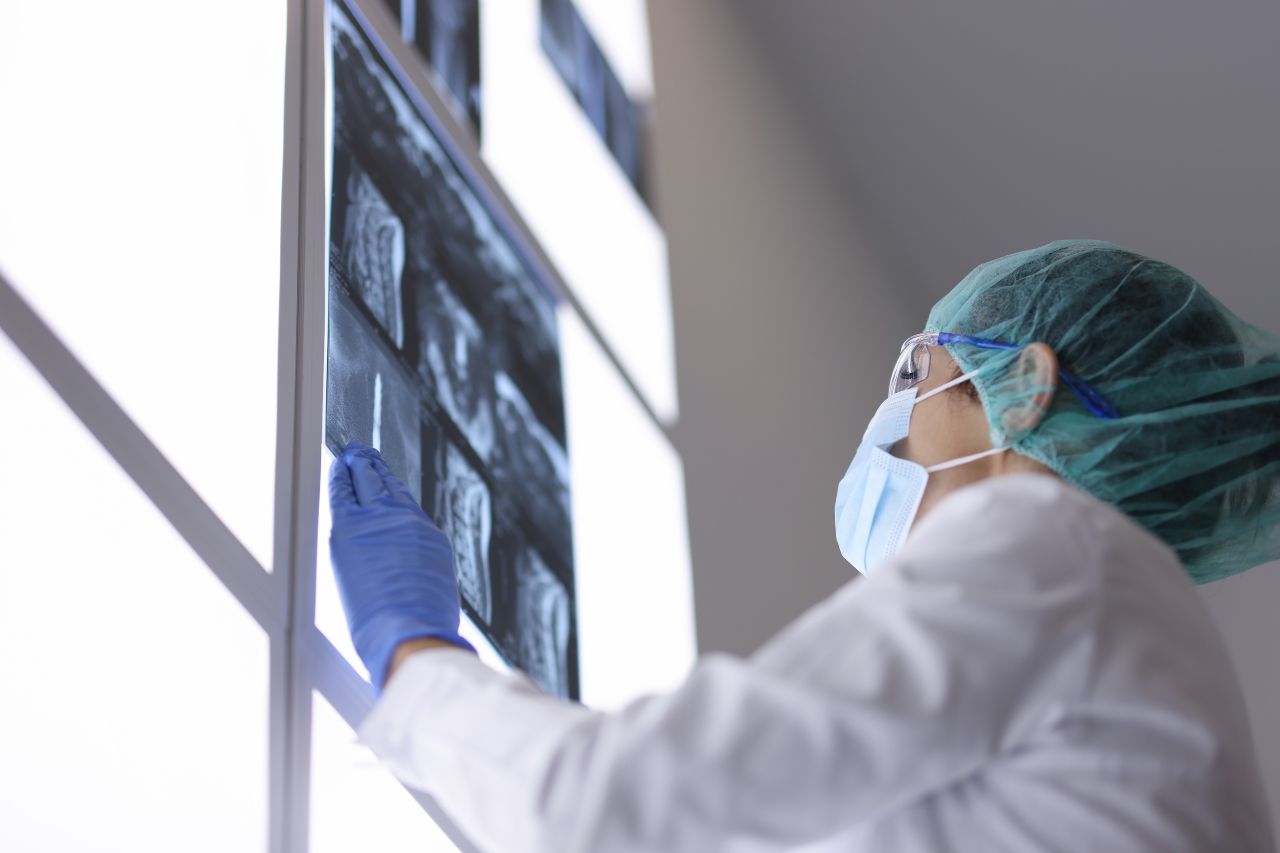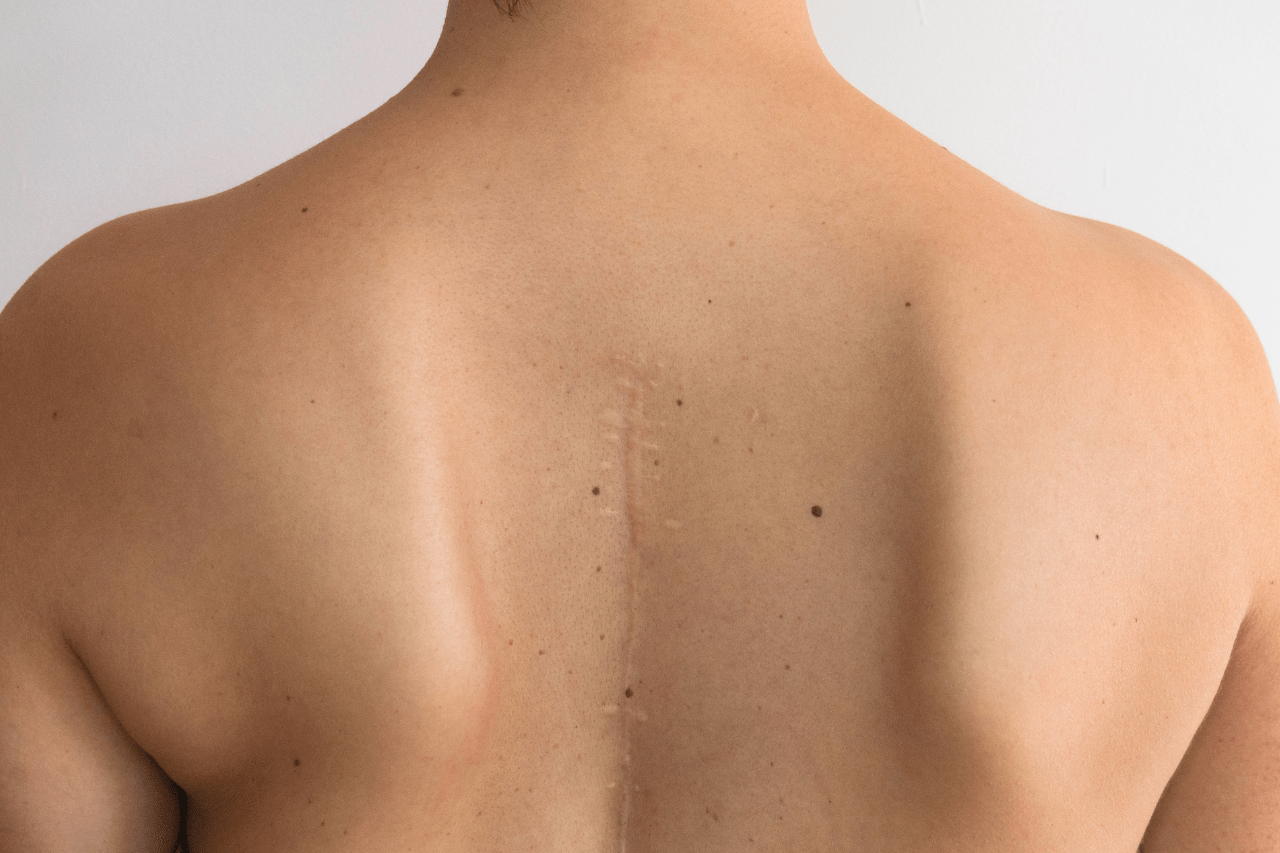Surgical Treatment for Scoliosis

Structural scoliosis is an abnormal curving and twisting of the spine. It’s a permanent condition unless corrected by treatment. (Functional scoliosis is a curvature caused by a temporary problem.)
Doctors diagnose structural scoliosis using various physical exams and imaging procedures. If the curvature of your spine is 10% or more, you are considered to have scoliosis.
If you have mild scoliosis, your doctor may not recommend active treatment, opting instead for ongoing observation and later intervention if the condition worsens. However, moderate or severe scoliosis may require surgery.
Spinal Fusion Surgery for Scoliosis
One of the most common surgeries for scoliosis is spinal fusion. It can be performed on children, adolescents, and adults.
Spinal fusion involves permanently attaching two or more vertebrae (spinal bones) to help stabilize and straighten the spine. Surgeons fuse the vertebrae using bone from your body or a cadaver, along with screws and wire. They may alternatively use a synthetic bone substitute.
Spinal fusion surgery for scoliosis typically takes four to eight hours, depending on how many vertebrae are being connected and other factors.
Scoliosis Spinal Fusion with a Harrington Rod
Spinal fusion for scoliosis can be completed using what’s called a Harrington rod. Doctors surgically implant this device and use hooks to attach it to the spine at points above and below the curve. They then use a ratcheting mechanism to gradually straighten and stabilize the spine and allow the vertebrae to fuse.
While this procedure has been generally effective through the years, Harrington rods can break loose from wires, bend, or break in two, requiring further surgery.
Today, the Harrington rod has largely been replaced by other devices that enable more points of attachment and can achieve better results in most cases.
Scoliosis Spinal Fusion Surgery Risks
Spinal fusion is a major medical procedure. Like all surgeries, it has risks, including:
- Bleeding
- Damage to nerves or blood vessels
- Infection
- Slow or incomplete wound healing
- Blood clots
Recovering from Scoliosis Spinal Fusion Surgery
How long does it take to recover from spinal fusion surgery? That depends on several factors, but you can expect to be uncomfortable for a few days following your procedure. However, by the third or fourth day after your procedure, you’ll start recovering rapidly and should feel well enough to get out of bed and move around. That’s when you’ll be discharged from the hospital.
Your doctor will require you to refrain from driving for six weeks or more after your surgery to support proper healing and because you will be on pain medication.
Most patients improve steadily over several weeks to a few months. However, full recovery can take a year in some cases. Once you’ve recovered completely, you should be able to get back to all your favorite activities, including contact sports.
Vertebral Body Tethering: Another Surgery for Children and Teens with Scoliosis
In addition to spinal fusion, children and teens can undergo another surgical procedure to correct scoliosis called vertebral body tethering. This minimally invasive procedure uses screws and flexible tethers that a doctor can gradually tighten to reduce a spinal curve.
The less-invasive nature of this surgery means patients are less likely to have complications.
Vertebral body tethering typically isn’t appropriate for adults.
Talk with Your Baptist Health Doctor About Surgical Treatments for Scoliosis
Scoliosis can cause pain and discomfort, and it can worsen over time. Spinal fusion and vertebral body tethering can stabilize the spine and reduce its curvature.
If you or your child has scoliosis, talk with your Baptist Health doctor about treatments. They can work with a neurologist to measure the spinal curvature, monitor it for progression, and determine the type of therapy or surgery that will produce the best outcome.



